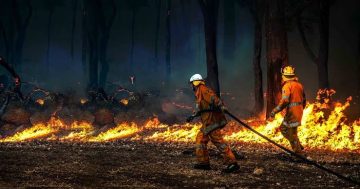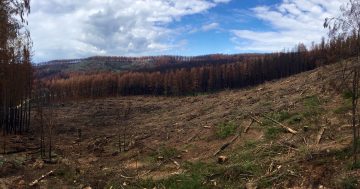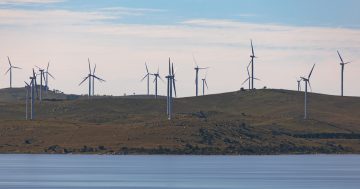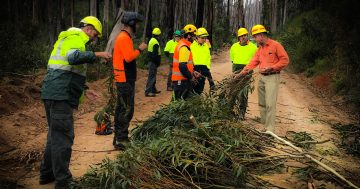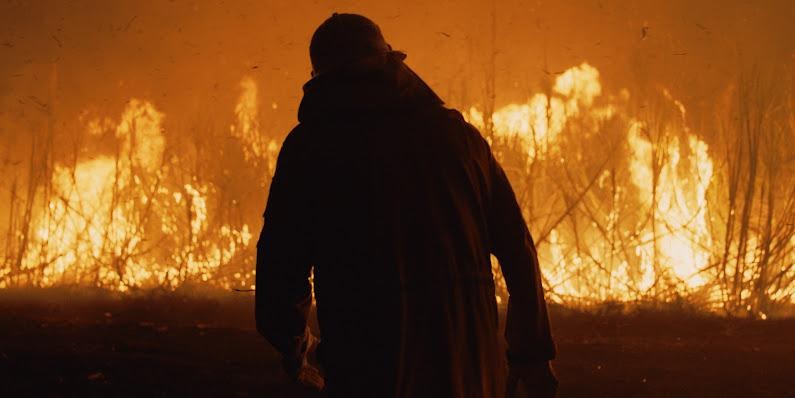
Mega bushfires could get worse, one expert warns, and it might require a rethink of how we fight fires. Photo: Sydney Film Festival.
Since the 2019/2020 black summer bushfires, millions of dollars have poured into new fire prevention technology around the country, but one expert warns we might be going about it all wrong.
Late last month, the CSIRO announced it would be trialling a new AI fire detection program using advanced satellite technology to track and respond to fires. But UNSW Canberra Professor Jason Sharples has warned we have to be extremely careful not to engage in knee-jerk responses that could make fires worse.
Prof Sharples, a leading bushfire expert, is concerned that an overreliance on new technologies like satellites, drones, and AI could ultimately worsen our responses to fires.
“When you have a really bad fire season, one of the immediate reactions is, we don’t want that to happen again, so we should just try and put out all fires as soon as we can,” Prof Sharples said.
“We should resist a total exclusion policy in Australia … you think you’re doing a good thing by suppressing fires in particular communities, but it can actually come back to bite you decades down.”
One of Prof Sharples’ biggest worries is that new technology could see countries like Australia fall into the same trap that the US did in the early 20th century.
Following a series of devastating fires in 1910, California implemented new technology to establish a suppression strategy aiming to extinguish every fire by 10 am the next day.
It worked for a time, but today, that strategy is widely blamed for the state’s increase in devastating wildfires.
“If you look at the ponderosa pine forests in the US, they evolved with fires every five to 30 years, and so when you start suppressing fires, not letting them burn those ecosystems for a very long time, it can disrupt the ecosystem and cause it to change its accumulation of fuel. That can change its structure; it can even change the type of forest that you have. It can be dominated by shrubland, rather than open for the pine forest, for example.”
Australia has never had a suppression policy; existing fire management regimes involve the widespread usage of prescribed burning to reduce fuel loads in high-risk areas.
But as fire seasons get longer and hotter, our traditional methods of fire management could prove inadequate.
NSW RFS has spent years trying to clear a backlog of prescribed burning, after years of complex weather made conducting burns difficult.
The ACT also only recently cleared its backlog. These shortfalls have many looking at high-tech solutions.
But Prof Sharples said that rather than rely on technological “panaceas”, we need to explore different firefighting strategies.
“If we take a lesson from our Indigenous people, a lot of the burning they were doing is very low-intensity burning, very patchy. It was done on a fairly broad scale, so I think that’s where we need to head back towards, doing those fairly large-scale, low intensity [burns].”
He said he wants to see the wide-scale implementation of cool burns trialled.
Cultural or cool burns have been experimented with in Canberra in recent years, with ecological burns recently taking place at the Ginninderry Nature Corridor, but there are barriers to the widespread implementation. Cultural burns are usually lower scale than traditional hot burns and require a high level of engagement from practitioners.
Prof Sharples said that low-intensity burns do require more personnel to administer, but suggested that rather than focus on low-effort technological solutions, Australia needs to consider a more ground-level community approach to bushfire readiness.
“That is a challenge, but I think there’s a real opportunity to engage with Indigenous communities and get them involved in getting back out on the country, and getting other Australians involved in caring for country,” he said.
“It would take a lot more effort, but if we really want to be serious about trying to stop these extreme fires, that’s the way you do it.”
Original Article published by Nicholas Ward on Region Canberra.








